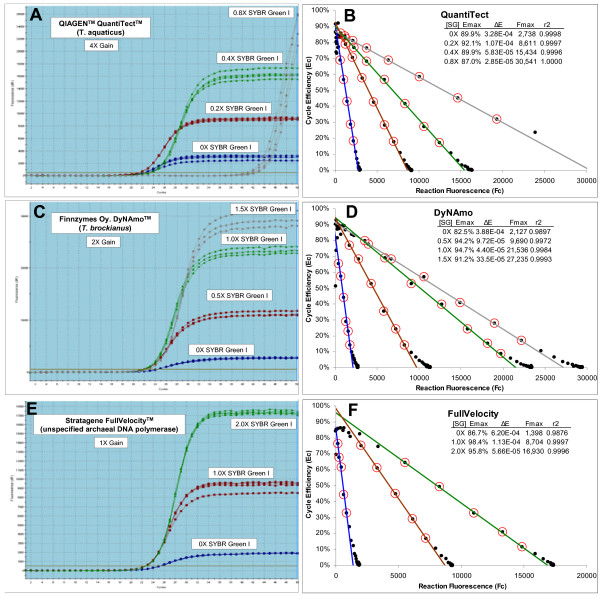Figure 2.
Assessing the impact of SYBR Green I quantity on real-time amplification profiles. Replicate amplification reactions were prepared using three commercial enzyme formulations supplemented with increasing amounts of SYBR Green I. Each amplification reaction contained 100 femtograms of lambda gDNA (1,876 genomes) and 500 μM of the primers K7B and K12. The gain setting for each run was adjusted to ensure that reaction fluorescence remained below the saturation level of the photomultiplier tube (about 40,000 FU). (A), (C) and (E) Screen shots of amplification profiles generated by the Stratagene MxPro qPCR software. This reveals that fluorescence intensity is dependent on SYBR Green I quantity, reflected by the large increase in the height of the amplification profiles as SYBR Green I quantity is increased. (B), (D) and (F) LRE plot of each respective amplification profile. This reveals a linear domain corresponding to the central region of each amplification profile, confirming the mathematical prediction that amplification efficiency is linearly coupled to amplicon quantity. A consecutive group of points was selected (designated by red circles) for linear regression analysis (referred to as "LRE analysis"), generating estimates for Emax (intercept) and ΔE (slope), from which Fmax was calculated using equation 4 (see Figure 1 for additional details). Details as to how the boundaries of the linear region were determined are described later in the study. [SG]: quantity of supplementary SYBR Green I, r2: linear regression correlation coefficient.

